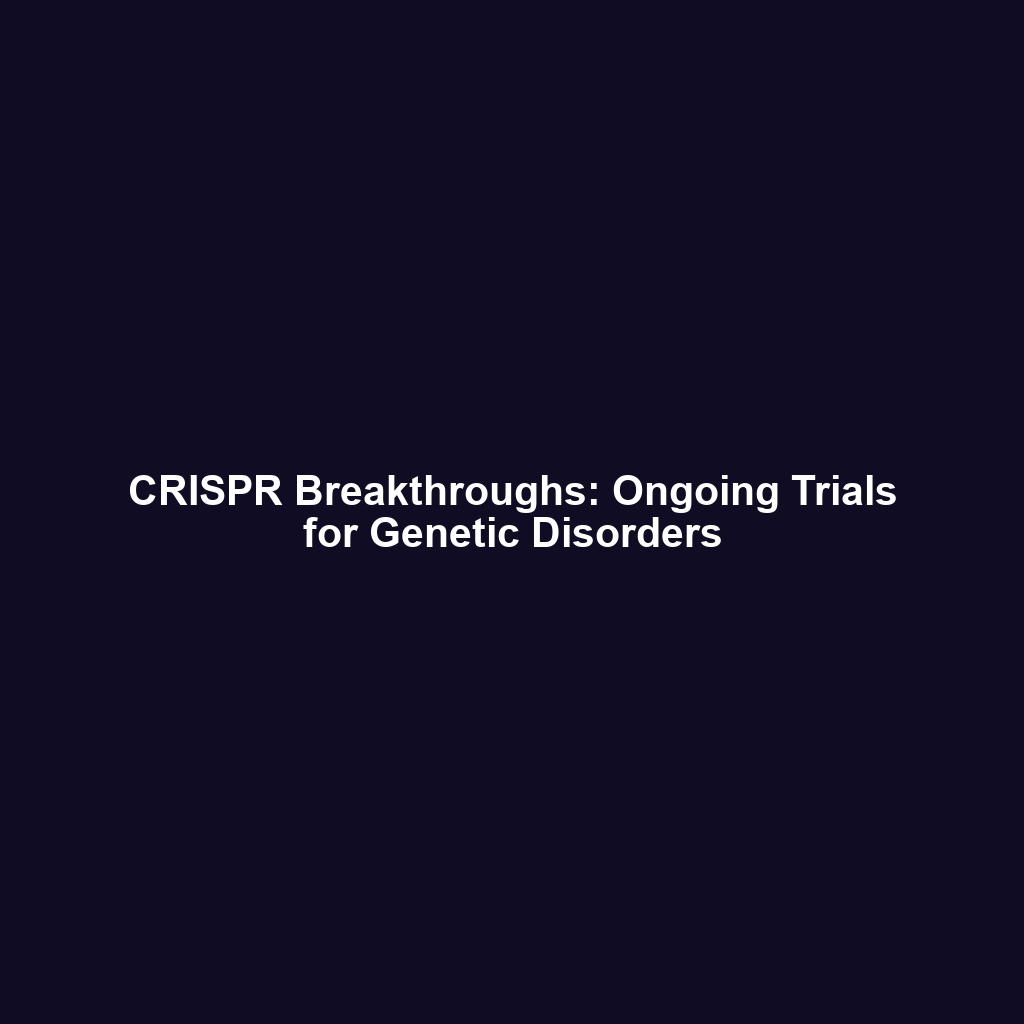Ongoing Clinical Trials Using CRISPR for Genetic Disorders
Ongoing clinical trials using CRISPR for genetic disorders are creating unprecedented opportunities in the field of genetic engineering. As CRISPR gene editing technology revolutionizes the approach to treating hereditary illnesses, researchers are actively exploring its potential to cure or alleviate genetic conditions. The significance of these trials cannot be overstated, as they pave the way for transformative therapies that could change countless lives. This article reviews the ongoing trials, key concepts, applications, challenges, and future research in the realm of CRISPR gene editing.
Key Concepts
Understanding the principles of CRISPR gene editing is essential for comprehending the ongoing clinical trials. Here are major concepts related to this innovative technology:
- CRISPR-Cas9 Mechanism: A system that allows for precise editing of DNA by creating double-strand breaks in specific locations.
- Gene Therapy: The application of CRISPR technology in modifying genes to treat diseases at the genetic level.
- Personalized Medicine: Tailoring treatments based on individual genetic profiles using CRISPR’s capabilities.
These concepts encapsulate how ongoing clinical trials are not only testing the safety and efficacy of CRISPR interventions but also exploring the broad potential of CRISPR gene editing to address various genetic disorders.
Applications and Real-World Uses
The applications of ongoing clinical trials using CRISPR for genetic disorders are diverse and impactful. Some notable examples include:
- Sickle Cell Disease: Trials are underway to use CRISPR to modify blood cells in patients with sickle cell disease, potentially curing the condition.
- Cystic Fibrosis: Researchers are exploring CRISPR applications to edit the genes responsible for cystic fibrosis, aiming to restore normal lung function.
- Beta-Thalassemia: Clinical trials are actively investigating CRISPR’s effectiveness in correcting the genetic defects causing beta-thalassemia.
These applications illustrate how ongoing clinical trials using CRISPR are utilized to tackle significant genetic disorders, demonstrating the practical implications of CRISPR gene editing in medicine.
Current Challenges
While the promise of CRISPR gene editing is immense, several challenges and limitations persist. These include:
- Off-target Effects: The potential for unintended mutations that could lead to harmful consequences.
- Ethical Concerns: Ethical debates regarding gene editing, particularly in germline modifications.
- Regulatory Hurdles: Navigating the complex landscape of regulatory approvals for new therapies.
Addressing these challenges of ongoing clinical trials using CRISPR for genetic disorders is crucial to ensuring safe and effective treatments in the future.
Future Research and Innovations
The landscape for ongoing clinical trials using CRISPR for genetic disorders is dynamic, with several innovations on the horizon:
- Next-Generation CRISPR: Developments like CRISPR-Cas12 and CRISPR-Cas13 are emerging, potentially enhancing specificity and reducing off-target effects.
- Delivery Mechanisms: Innovations in delivering CRISPR components effectively to target cells are being explored, which is vital for successful gene editing.
- Combination Therapies: Research is underway to combine CRISPR with other therapeutic approaches for enhanced efficacy.
These future-oriented breakthroughs could redefine CRISPR gene editing and its applications in treating genetic disorders.
Conclusion
Ongoing clinical trials using CRISPR for genetic disorders represent a frontier in medical science, highlighting the transformative potential of CRISPR gene editing. As researchers navigate challenges and innovate for the future, these trials are pivotal for developing advanced therapies that could significantly improve patient outcomes. For more information on related topics, visit our genetic research page or check out the latest updates in CRISPR technology.

